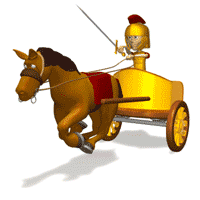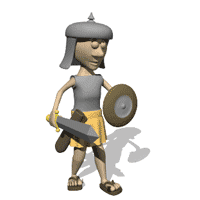  |
  |


Since the Early Roman Republic, the army was becoming a major part of the lives of the people. Wars and battles were fought just about every year, and it was common to have rituals to signify the beginning and end of the campaigns for the year. During the time of the republic, the army was solely a citizen army, and all citizens were liable for service (provided they were financially able to own some land) within the considered military age of seventeen to forty-six. Every year a selection process took place called dilectus. All men of military age were required to visit the capitol of Rome for possible recruitment. Citizens with property valued at over 400 Denariióa silver coin which was the principle form of payment in the Roman timesówere liable for service. When enrolled in military service, the men were required to serve a maximum of sixteen years, but often were only expected to serve six years with a callable period for the remaining ten years. Some went into service only one year at a time, and then would attend the selection process every year until their six years were up. It was not uncommon that all youths who were eligible for military service served in a campaign for a few years during their lives.
The army also gave the chance to give glory and honor to the family name, though there was more pressure on the rich and elite property class to do this. This also is another important factor that affected the lives of the Roman citizens. Serving in the army and becoming a veteran or hero was one of the biggest honors a Roman could have. If a certain officer gained enough power and influence through the army, he was also respected and often times had place of leadership and power in the senate. Therefore, the army directly was related to the balance of power within the political realm of the empire.
In the late 3rd century B.C., the army of the Roman Republic was just emerging as a formidable power, as they now controlled the Italian Peninsula south of the Po River. The army was now rapidly becoming an offensive war machine. What made the army during this period so effective? The biggest contributor was the important trait of being able to adapt and improve. After fighting with the Greeks and other societies that used the famous phalanx as their main tactical formation, the Romans adapted a more flexible and looser fighting method, which had a distinct tactical advantage over the phalanx. Also, the struggle with Hannibal showed that brilliant generals with inferior numbers could crush an enemy of superior numbers with less able generals. Rome realized that they needed to superior leadership to be an effective fighting force.

| © RIYAN Productions |